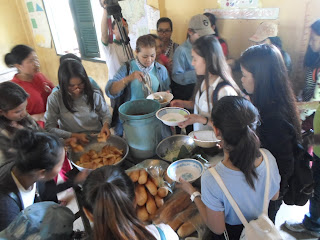Located about 45 km south of Phnom Penh (about 1.5 hour's drive) is Chisor Mountain where an 11th-century Khmer temple resides at 130 m above sea level. This temple built by King Suryavarman I is the pride of the locals in Sia Village in Takeo Province. Constructed of laterite and sandstone, the temple was dedicated to the Hindu deities of Shiva and Vishnu.
The locals typically prefer to climb up the 390 steps on the west side of the mountain and descend down the 408 steps on the south side. In addition to the historical temple, the other worthy reward of the climb is the panoramic view of flat rice fields in Takeo province from the top of Chisor Mountain.
A word of caution: If you're a foreigner visiting the mountain, you may be solicited by random locals who claim to be responsible for the temple's and mountain's upkeep. They will demand that you buy a ticket to see the ancient temple. I was skeptical of their practice since there were no signs suggesting that foreigners must pay to visit the temple. An acquaintance who had previously visited the site had informed me that he hadn't been approached by anyone on his visit. Thus, be warned of such dubious tactics.
Next post: National Gallery Singapore - January 9, 2017
Previous post: Community Outreach, Takeo Province, Cambodia - May 13, 2016


















































